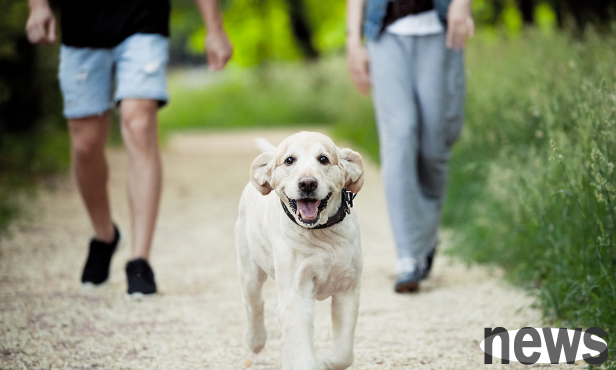In real life, many pet dogs have rickets. The impact of this disease on pet dogs can be said to be lifelong. Pet dogs suffering from this disease will deform their bodies and bones and deform when walking, which is very painful for the dog itself. H...
In real life, many pet dogs have rickets. The impact of this disease on pet dogs can be said to be lifelong. Pet dogs suffering from this disease will deform their bodies and bones and deform when walking, which is very painful for the dog itself. However, what should dogs do if they have rickets? What should dog parents do when raising pet dogs?

1. Why do dogs get rickets?
From a medical perspective, rickets is a disease that pet dogs are prone to. The main causes of this disease, such as insufficient or lack of vitamin D. In addition, dogs do not consume enough calcium from their diet, or insufficient calcium and phosphorus in the feed or improper proportion. When dogs are in this diet for a long time, they are prone to rickets. In addition, insufficient exercise, narrow range of motion (such as dogs often kept in cages), or lack of sunlight can also easily lead to dogs suffering from rickets.
2. How to treat and prevent rickets in dogs?
When you find that a pet dog has a condition similar to rickets, you must start treatment as soon as possible.
The first simplest treatment method is to prepare food for dogs scientifically and reasonably to meet their physical growth needs for various nutrients. In particular, supplementing enough calcium, phosphorus, and vitamin D can help fully absorb calcium. You can usually feed your dog some pet instant calcium vitamins, which contains a variety of pet calcium, 8 vitamins, and 12 trace elements including phosphorus, which can well balance the nutrients lacking in the dog's body and help treat rickets.
In addition to dietary supplementation of nutrition, rickets can also be particularly severe and requires medical treatment.
For example, early treatment, vitamin D preparations can be used, cod liver oil is added to the feed, and the daily dosage is 400 units/kg body weight.

Vitamin D2 gelatinous calcium injection (calcitol gelatinous calcium injection), the dosage of dogs is 2,500-5,000 units per time, and is injected in muscle or subcutaneously.
If vitamin D3 injection is used, intramuscular injection is performed at 1500-3000 units/kg weight.
Calcium preparations can also be used, such as precipitating calcium carbonate orally taking 0.5-4 grams per time, or calcium lactate orally taking 0.5-2 grams per time. Also, 10% calcium chloride or 10% calcium gluconate can be injected intravenously.
It is worth mentioning that if the treatment is carried out according to the above medical methods, then the veterinarian’s consent must be obtained first in terms of the selection of drugs and the proportion of drug use. Because the conditions of rickets in different dogs are different, the methods and medication choices may also be different during treatment. To ensure the health of the pet dog, the treatment method should be determined based on the actual condition of the dog, which is the most scientific.
To prevent rickets from dogs, we must strengthen breeding and management. Pregnant and nursing female dogs should be given full-price feed and calcium should be regularly replenished. Puppies should strengthen outdoor exercise, increase the time for sun exposure, and actively prevent and treat gastrointestinal diseases in puppies.